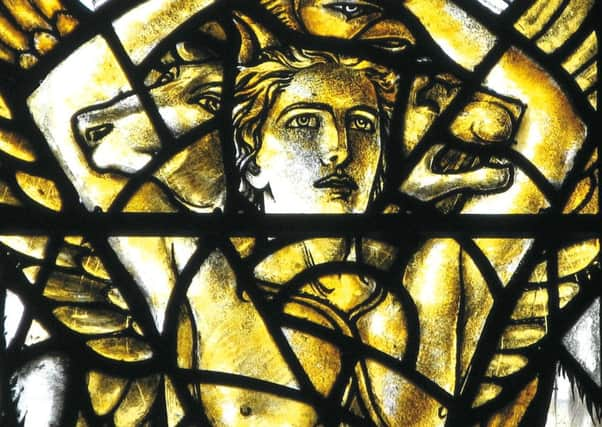Book review: Arts & Crafts Stained Glass, Peter Cormack


For purely practical reasons, stained glass is seldom included in exhibitions of the Arts & Crafts movement. The same was true back in its heyday around 1900, when preparatory cartoons might only be shown in even the major professional shows. Yet this most dazzling of all crafts was the one which most people in Britain and the United States encountered regularly, when they went to church. Times change, and, unless we are avid glass enthusiasts and seek it out, until now we have only had patchy glimpses of what was produced.
Michael Donnelly’s pioneering books of the 1980s and 1990s introduced many to Scottish glass of this period. This handsome book by the UK’s leading glass historian Peter Cormack goes much further, providing us with the first in-depth study of the field in Britain and America up to the 1950s. Scrupulously researched and clearly written, it is illustrated with nearly 300 fine colour photographs, the majority taken by the author or from his collection. A former curator of the William Morris Gallery in Walthamstow (and himself a maker of stained glass), Cormack has researched the field for over 30 years and has an unrivalled understanding of the period and its people. Although well indexed, his book is neither a dictionary nor a gazetteer; rather, Cormack seeks to explain exactly what Arts & Crafts glass is and above all what it meant to its makers, and thus to chart its progression from the artists’ perspective.
Advertisement
Hide AdAs the story unfolds we are introduced to the artist reformers who shunned the drab colours and often mediocrity of much Victorian commercial glass. The Morris company, of course, is there near the beginning, but soon Christopher Whall, who, with Louis Davis and Scotland’s Douglas Strachan, is one of Cormack’s star British artists, makes his first appearance. Deeply influential, he sought to make the sheer materiality of glass the focus of its design, writing that he wished to clothe “the raw glass with texture” and bring out “its nature and life”. Contrary to commonplace perception, Arts and Crafts was not a sad bleat for a lost past, and Cormack emphasises artists’ commitment to the modern age, quoting Whall’s words that the artist must “speak straight to the heart of their own day and to its needs”.
Glass artists had their individual visions of how this might work. Some were drawn to the mystic images of William Blake, or to more recent Pre-Raphaelite romance. However, the palettes they carefully chose could, in Strachan’s words, provide a “re-awakening to the jewel-like splendour of old glass”. An awareness of tradition and the discovery of glass’s potential to combine the poetic with a sense of dramatic beauty could at times be combined, as in three particularly magnificent schemes – Davis’s windows at Dunblane Cathedral, Strachan’s programme for the Peace Palace in The Hague (as glorious as his Lowson Memorial Church windows in Forfar or his Scottish National War Memorial) and Whall’s Gloucester Cathedral glazing. With its abundance of church buildings Scotland fares well in the book, with not only glass at home covered but the lesser known Henry Wynd Young and John Gordon Guthrie (son of William of the Glasgow firm of J & W Guthrie) who settled in America given due attention.
The book takes us through the histories of glass studios, workshops and glass’s proud position in the new art schools including London’s Central School and Royal College of Art and Edinburgh College of Art. The leading artists taught vocational classes, with the best students then often recruited as workshop assistants. Cormack is good on the atmosphere of glass workshops which were as often places of fun as well as serious, collective endeavour. He tells, too, how women such as Mary Lowndes, Margaret Rope and Wilhelmina Geddes, became stars in the field. Every artist had his or her distinct aims and personalities. Their interwoven stories are engagingly told, sometimes across different chapters, and this as much as the glass itself makes for an engrossing read.
Dr Elizabeth Cumming is a trustee of the Scottish Stained Glass Trust. Her books include Hand, Heart and Soul: The Arts and Crafts Movement in Scotland (Birlinn, reissued 2013)